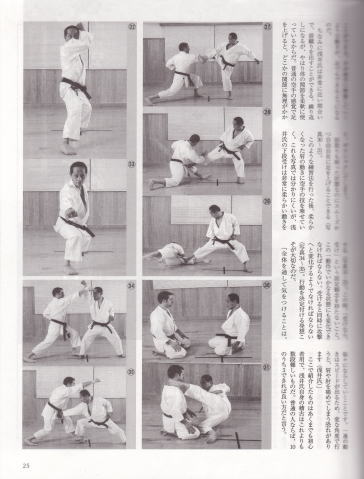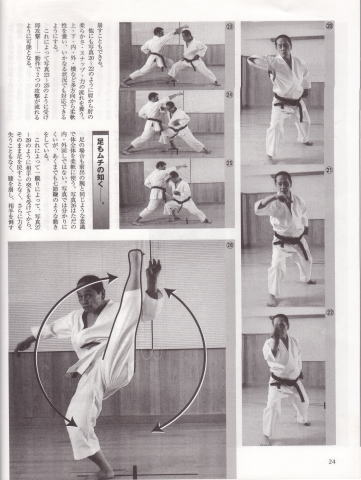Training Methods: Softing your ligament


Asai Sensei gives the following explanation on what is necessary to develop soft ligaments capable of carrying out the Seven-Jointed Whip-like techniques.
He says that we first, must train how to expand and contract our:
1- Joints.
2- Ligaments.
3- Muscles..
Asai Sensei says: "Your method of trainind, will determine your abilty to attack and deffend youreself." In addition, says that "The joints you train, will further determine your Martial Ability". The most important joints to train are: the shoulders, the waist, hips, knees, ankles, chest, and back, representing the Seven-Jointed Whip. This method of training Asai Sensei calls the "Jyu-Jin-Ho", which translates to Softening the Ligaments.
① Asai Sensei style stretching.
② Stillness, (pushing).
③ Movement, (Rotational movement)
Let us examine those in more details.
① Asai Sensei style stretching mainly concerns not only physical extention and stretching of one's ligaments, but also the visualization of the actual ligaments in action, as they are undergoing this extending and streching process.
② Stillness mainly concerns joining your internal power with the external power through your breath while visualizing this process in order to train your ligaments. If you do not train in this method, you only train the form of the movement and not the power of the movement.
Look at the following pictures
1~4: When one straightens one's arm, breath-in, therefore also stretching the ligament.
③ Movement deals with training your ligaments through rotational movement. To do so, use of any of your joints such as your ankle joints, waist, upper body and neck as a point of pivoting your limbs on your joints. This will allow your joints to expand and contract thus undergoing this training. Depending on which part you are going to rotate, your movement will slightly need to be altered. look at the following pictures 5~8.
9~11: This involues movement and turning. We can use all our joints , turning them on an axis , in various patterns. For example opening and closing , making circles and bending and straightening (deciding on the type of stretching exercise , depending on what joint you are stretching at the time).
For example:
- Shoulder joint training (Training the Shoulder ligaments).
Notice your shoulder joint.. If your shoulder is stiff, your fist is very slow, and if it is tight, the power remains in your shoulder without reaching out to the target. Therefore it is very important for you to make your shoulder joint soft, it is very important for your arm technique. Therefore, when you are training your shoulder, you must keep it down while your head is up. Do not fold your your neck down, but rather keep it well extended upwards.
Now, please look at the Steching Diagram above for the shoulder. This is one of Asai Sensei's methods for training your shoulder ligaments.
After you look at this diagram, please look at picture 12. Can you try generating power from your shoulder without using all your body? I think, the author says, most people are stiff in the shoulders, and thus their power is week, for that reason, I introduce to you Asai Sensei's training method, picture 13~15.
If you can use your shoulder properly, then your elbow snap will naturally come out through your back power allowing you to twine your attack around your opponent's his attack. Please look at picture 16~17.
Next look at pictures 18~19. In here your arm, including your shoulder have to be used like the 7-jointed-whip. Althought your opponent may block your attack, your arm will strike him in the back of the neck like a whip causing for a strong attack.
About the block, you can block the line of the block instead of the point of impact of the attack, by twining your arm against your opponent's attacking arm, and then this will enable you to take him down.
Picture 20~22, show movements of how you can make softness, snap, and power flow from your shoulder to your elbow.
If you train in the softness method in any of the following directions: upwards, downwards, inward, outward and sideways and all possible directions, you will be able to deal with your opponent in any situation from any direction.
Now, after you practice the flowing method, you can look at how pictures 23~25 show one movement with two objectives flowing, a block and an attack at the same time.


